Documents & Resources

Project resources
Here you will find the materials produced within the AMARE-EU project, including our multilingual toolkit, leaflet and newsletters.
Documents & Resources
(DK) AMARE-EU Toolkit
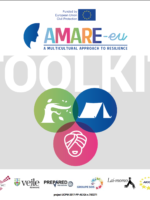
Formålet med denne værktøjskasse er at understøtte byer i opbyggelsen af resiliente samfund uden at glemme de personer, der har høj risiko for at blive ekskluderet, og dem, som i tilfælde af en katastrofe er særligt udsatte grundet manglende viden, opmærksomhed og dermed forebyggelse. Værktøjskassen giver forslag, eksempler og konkrete løsninger, der kan øge lokalsamfunds modstandsdygtighed, reducere krisesituationer og inddrage ikke-indfødte borgere og frivillige i resiliens- og katastrofeplanlægning.
Download(FRA) Amare Leaflet
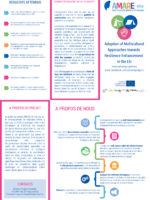
L’engagement d’une ville se base sur sa capacité à répondre de façon positive et constructive aux événements complexes, urgents et anxiogènes. La réponse doit impérativement menée à un procédé de redressement impliquant tous les aspects complexes qui caractérisent les sociétés d’aujourd’hui : sur le plan social, culturel et de la diversité économique, ensemble avec leur héritage culturel local. Pour que toutes ces actions atteignent en profondeur, un rétablissement sur le long term des villes et de leurs habitants.
Download(ITA) Amare Leaflet
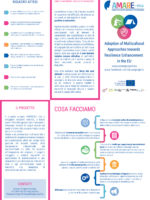
La resilienza di una città è la sua capacità di rispondere alle difficoltà, alle emergenze o a eventi ad alto impatto in modo positivo e costruttivo. Questa risposta dovrebbe guidare in modo efficace un processo di ripresa costruttivo, coinvolgendo tutti gli elementi di complessità che caratterizzano le città di oggi: cultura, società, diversità economica e patrimonio culturale locale. Tutto ciò con l’obiettivo di ottenere una ripresa effettiva e di lungo periodo per la città e per tutti i suoi abitanti.
Download(GER) Amare Leaflet
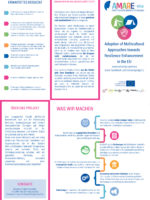
Die Resilienz einer Stadt wird dargestellt durch ihre Fähigkeit auf Schwierigkeiten, Notfälle oder belastende Ereignisse in einer positiven und konstruktiven Weise zu reagieren. Die Reaktion sollte idealerweise zu einem konstruktiven Prozess der Wiederherstellung führen, der alle Aspekte der Komplexität wiederspiegelt durch die Städte heute charakterisiert sind: kulturelle, soziale und wirtschaftliche Diversität, zusammen mit einem lokalen, kulturellen Erbe. All dies um eine tiefgreifende und langzeitliche Erholung für die Stadt und ihre Einwohner zu erreichen.
Download(DAN) Amare Leaflet
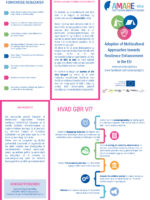
En resilient by er kendetegnet ved dens kapacitet til at reagere på problemer, nødsituationer eller alarmerende episoder på en konstruktiv måde. Denne reaktion skal ultimativt lede til en konstruktiv genopbyggelsesproces, der involverer alle aspekter af den kompleksitet, som byer i dag består af både kulturelt, socialt og økonomisk, herunder også grundet den lokale kulturarv. Alt dette er for at opnå dybdegående og langvarig genopretning af byen for alle dets borgere.
Download(ENG) Amare Leaflet
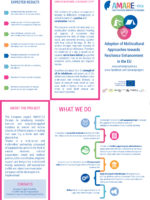
The resiliency of a city is its capacity to respond to difficulties, emergencies, or stressful events positively and constructively. This response should ultimately lead to a constructive recovery process involving all aspects of complexity that characterize the cities of today: cultural, social, and economic diversity, together with local cultural heritage. All this to achieve in-depth, long-term recovery of the city and all its inhabitants. Therefore, the resilience of a city is tested on its capacity not to leave behind groups that are considered most at risk because of economic, social, cultural, and linguistic factors.
DownloadOpen Library
In this section you will find documents, reports, tools and case studies related to the key topics of the AMARE-EU project, i.e. how to enhance city resilience in a multicultural environment.

Open Library
Filter by Documents Languages
Filter by Document Types
Filter by Documents Keywords
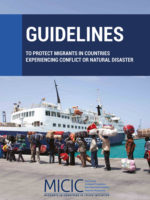
YEAR: 2014
ABSTRACT: Launched in May 2014 at the Global Forum on Migration and Development (GFMD) in Stockholm, following a call for action during the 2013 UN General Assembly High-level Dialogue on International Migration and Development, the MICIC Initiative is a governmentled...
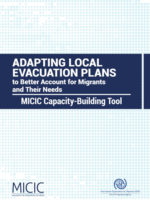
YEAR: 2017
ABSTRACT: This tool was compiled to assist emergency management actors at national and local levels in factoring in migrant populations in their crisis evacuation plans. Evacuations are a key measure to reduce the impact of natural and man-made hazards. Moving out of an area at risk or affected by a hazard, whether before or after its occurrence, can greatly reduce losses in emergencies...
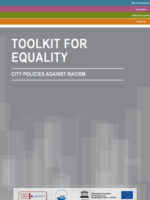
YEAR: 2016
ABSTRACT: Why should local governments act promoting equality? Why is anti-discrimination policy at the local level important? How should inequalities be identified, and their relevance assessed from a human rights perspective? What goals should be pursued? What topics can be addressed? How can challenges in planning...
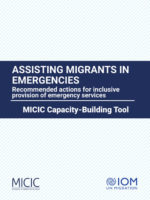
YEAR: 2017
ABSTRACT: This checklist is designed to help emergency service providers assess some of the main challenges they may encounter when providing key services in communities that host migrant populations, and identify actions they can take to overcome such barriers and provide more inclusive emergency assistance. It is designed for emergency management agencies and other actors....
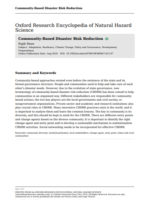
YEAR: 2016
ABSTRACT: Community-based approaches existed even before the existence of the state and its formal governance structure. People and communities used to help and take care of each other’s disaster needs. However, due to the evolution of state governance, new terminology of community-based disaster risk reduction (CBDRR) has been coined to help communities in an organized way...
